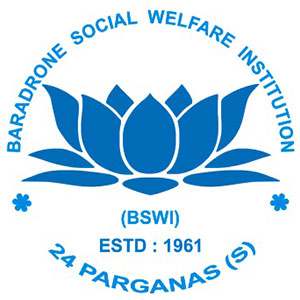Bridge Education Program
Support To Dropout & To-Be-Dropout Girls To Achieve High School Education In Diamond Harbour Block, West Bengal

Activities implemented
- Community Meetings and orientation
- Renovation of the school sheds
- Supply of School Materials
- Supply of Learning Materials
- Teachers’ Training
- Meetings with the Panchayat representatives
- Meetings with Self-Help Groups (SHGs)
Number of beneficiaries
347 adolescent dropout / non-school going girls

Type of support continued to the beneficiaries
- Coaching supports to the attending girls in project’s Bridge Education Centers
- Ten meetings held with the villagers and the local communities sensitizing about their girls’ education and marriages on maturity where about 410 villagers and parents participated. Issues discussed were why girls’ schooling is important and needed, why marriages at prescribed ages are important, why skill development is needed and why real life skill education is needed for the adolescent girls.
- School materials and learning materials have been supplied according to the need and appropriateness of the syllabus and their existing class coaching
- Training program of the instructors has been conducted for seven days in our headquarter on course curriculum, extra-curricular activities, mode of teaching & learning etc.
- Two meetings with the Panchayat representatives have been conducted on Girls’ Education on their cooperation with the project and support towards the beneficiary-driven project
- Meetings with Self-Help Groups (SHGs) have been organized for sensitizing the members of the SHGs to ascertain their knowledge on girls’ educational aspects

Report of the activities
Although the COVID19 Pandemic has disrupted our project to a great extent, still we have not stopped and continued to run the community-centre activities except on the lockdown periods and the periods of high occurrence of the deadly disease. Below are some of the programs we have implemented during the reporting period.

Community Participation
The target community participated in this project in terms of labour for the renovation of the village education centres, providing free time for the monitoring and managing the education centres by keeping vigils on the implementation of the project. Local parents’ committees have been formed who provided various supports and addressed local problems/challenges.
Awareness-raising
- We organized meetings with each stakeholder groups to assess their prevailing attitudes, apathy and behavior patterns to the dropout / about-to-be-dropout of the villages that has been seen as establishing a social relationship.
- We started establishing interactions with the stakeholder groups in order to exchange information and enhance their knowledge and understanding of the issue.
- We have found that awareness-raising is gradually breaking down social and other barriers between stakeholder groups through information-sharing and dialogue. The stakeholders have started to express themselves more freely than before as individuals and collective.

Advocacy
- The project has made concerted efforts and involved local politicians through visits to the block education department and Panchayats, writing letters to Panchayat/block officials/district politicians on the project, and inviting them to participate in project activities.
- We have initiated Capacity-building meetings and workshops; capacitating adolescent girls as advocates; advocacy through local institutions and structures; promotion and strengthening women’s groups; working with local government to implement national policies.
Education
- We have engaged and mobilized the target communities by discussing issues of concern with the targeted communities about the importance of education and the dangers of early marriages, and we are involving them in all aspects of the project, including the building of the centers and assisting in their management and operation. In addition, the project would organize community-based formal school enrolment drives, including reaching out to adolescent girls who had previously dropped out.
- As extra-curriculum activities, the project is including topics such as life skills, drama, art, health, and hygiene in curriculum to afford beneficiaries a well-rounded education that would continue to be of use in their futures. The strategies would be providing the at-risk adolescent girls to a wide range of arts-based, recreational, and participatory activities, while consistently emphasizing the importance of academic progress.
- To address the quality of education, we are involving the parents in activities relating to their girls’ education, whether it be building or renovating facilities, or planning, administering, monitoring, or otherwise supporting education programs in the community. Working closely with parents is significantly influencing their attitudes towards education. The girls are gradually becoming motivated to go to school by the increased parental interest in their education and involvement in school activities.

